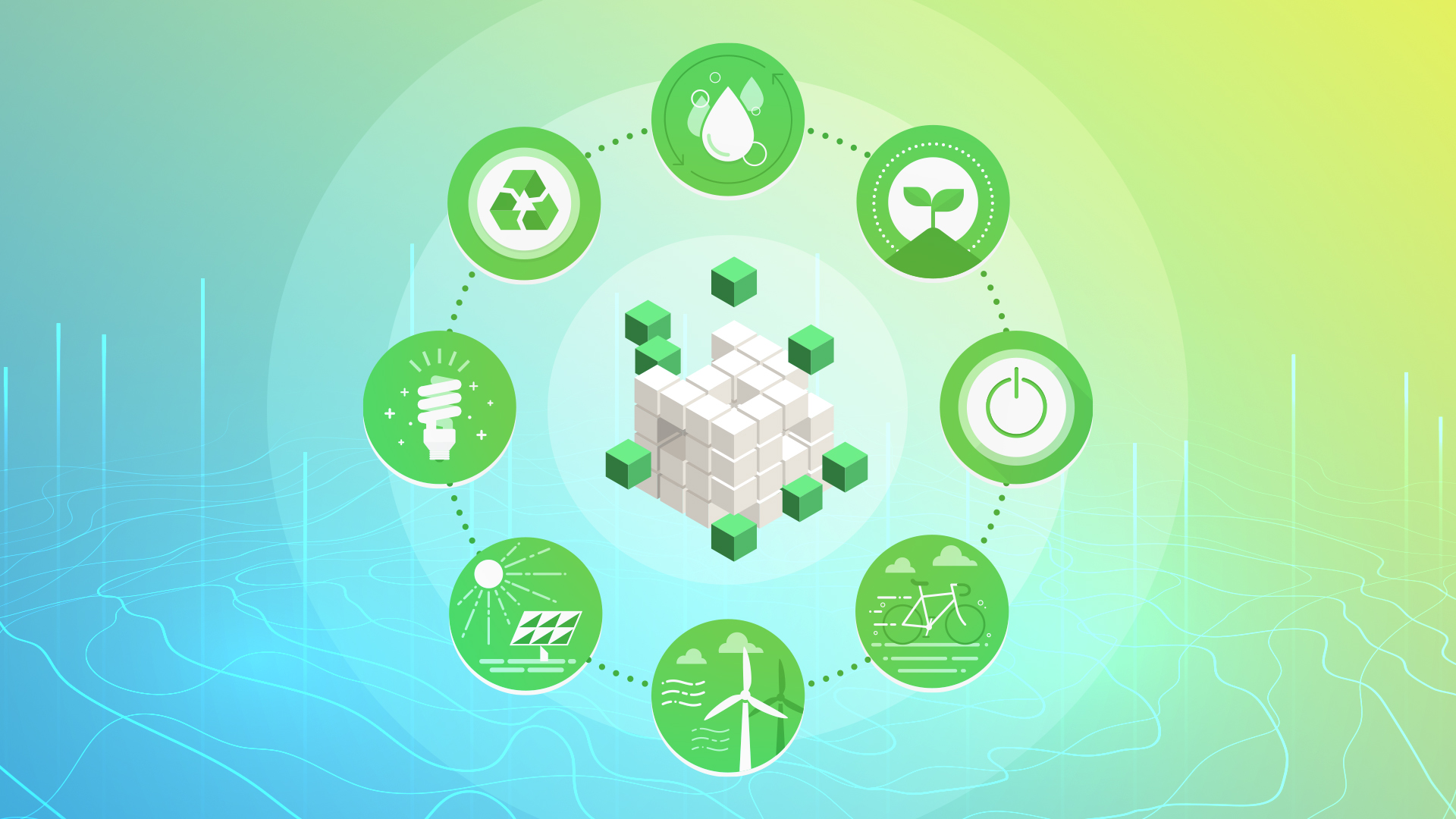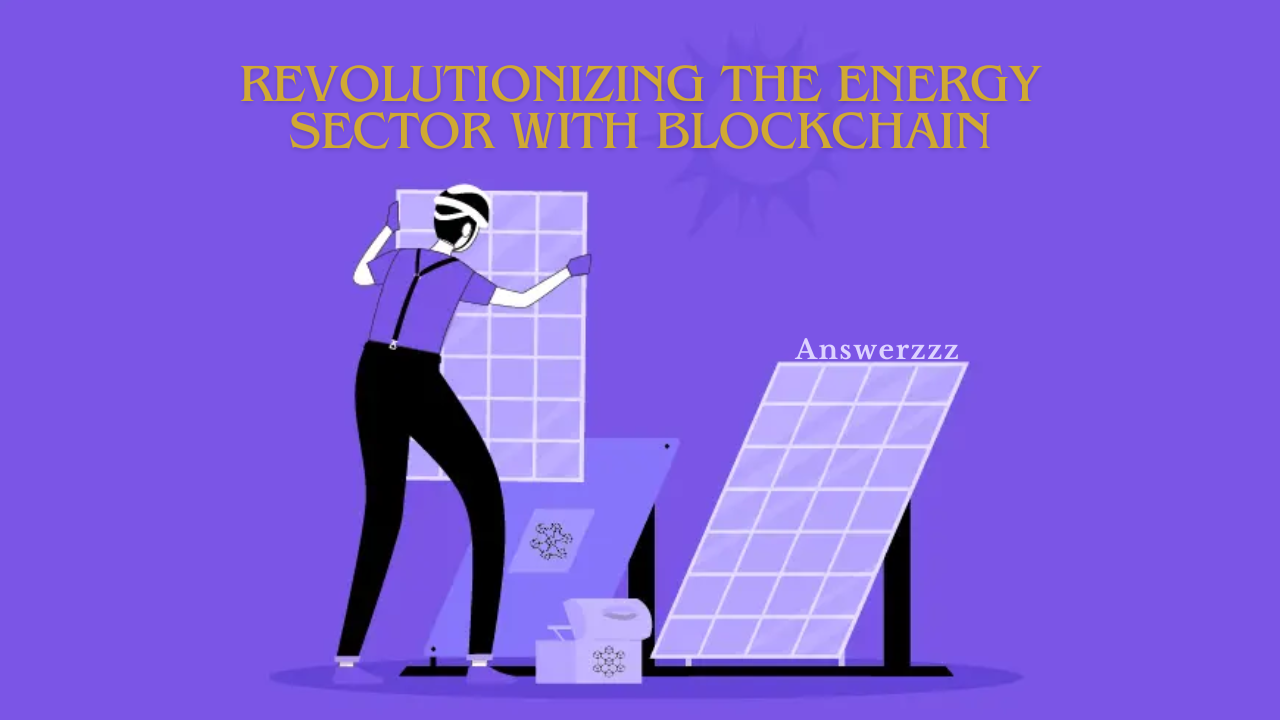Blockchain technology is transforming various industries, and the energy sector is no exception. This emerging technology offers innovative solutions to the challenges of traditional energy markets, including inefficiencies, lack of transparency, and high operational costs. As energy demands grow and the call for sustainable solutions intensifies, blockchain offers a decentralized, secure, and efficient alternative to conventional energy practices. In this article, we will explore how blockchain is reshaping the energy sector, its potential benefits, challenges, and the future outlook of this transformative trend.
1. Introduction to Blockchain in Energy

Blockchain technology, initially developed for cryptocurrency, is a decentralized ledger that records transactions across a network of computers. Each transaction is recorded in a block and linked to the previous block, creating a chain of data entries that are immutable and transparent. This decentralized nature provides unique advantages for the energy sector, where the need for transparency, efficiency, and secure transactions is critical. Blockchain’s ability to facilitate peer-to-peer transactions without intermediaries makes it ideal for managing energy exchanges, monitoring grid operations, and verifying energy sources.
2. Understanding the Challenges in Traditional Energy Systems
The traditional energy system faces several challenges, such as centralized control, inefficiency, and lack of transparency. Large power companies have centralized control over energy production and distribution, often leading to monopolistic practices and limited competition. Furthermore, the current energy infrastructure is complex and costly to maintain, with operational inefficiencies that drive up costs for end-users. Another significant issue is the lack of transparency in energy sources. Consumers often struggle to verify if the energy they are using is indeed renewable, which undermines efforts toward a cleaner, more sustainable future. Blockchain, with its ability to decentralize control and provide transparency, presents a promising solution to these challenges.
3. Decentralizing Energy Production and Distribution
Blockchain can decentralize energy production and distribution by enabling peer-to-peer energy exchanges. This system allows individuals and businesses to trade energy directly with each other without relying on a central utility provider. For example, a household with excess solar energy can sell it directly to a neighbour, facilitated by a blockchain-based platform. Smart contracts – self-executing contracts with the terms of the agreement directly written into code – can automate these transactions, ensuring that payments are processed only when energy is received. This decentralization promotes competition, reduces costs, and encourages local renewable energy generation.
4. Enhancing Transparency in Renewable Energy Sources
Consumers today are increasingly interested in knowing the source of their energy. Blockchain’s transparent ledger system enables users to verify if the energy they consume comes from renewable sources. By recording each energy transaction on a blockchain, consumers can track the journey of energy from production to consumption. This transparency builds trust and promotes cleaner energy usage, as consumers can make informed choices about their energy sources. Blockchain’s ability to provide verified, unalterable data ensures that claims of renewable energy usage are authentic, supporting the global shift toward sustainable energy practices.
5. Improving Grid Management and Stability
One of the significant advantages of blockchain in the energy sector is its potential to improve grid management. The traditional grid system is often inefficient in handling fluctuating demand and supply, especially with the rise of decentralized renewable energy sources. Blockchain can provide real-time data on energy production and consumption, enabling grid operators to manage loads more effectively. By tracking energy flows and storing data in a secure, decentralized ledger, blockchain can help prevent grid overloads, blackouts, and other disruptions. This improved grid stability is crucial for integrating renewable energy sources and managing the complexities of a decentralized energy network.
6. Optimizing Energy Trading with Smart Contracts
Blockchain-based smart contracts can transform energy trading by automating transactions and reducing the need for intermediaries. In traditional energy markets, trading involves lengthy processes and high costs due to the need for intermediaries such as brokers and regulators. Smart contracts eliminate these intermediaries by executing transactions automatically once specific conditions are met. For instance, an industrial facility could set up a smart contract to buy renewable energy only when prices drop below a certain level. This level of automation reduces transaction costs, speeds up the trading process, and makes energy markets more accessible.
7. Reducing Energy Theft and Fraud
Energy theft and fraud are major issues in many parts of the world, resulting in significant financial losses for utilities and increased costs for consumers. Blockchain’s secure and tamper-proof ledger can mitigate these problems by providing a transparent record of energy transactions. Each transaction is verified and stored on the blockchain, making it nearly impossible to alter or falsify data. This enhanced security helps to prevent unauthorized access and energy theft, ensuring that energy reaches consumers as intended. By reducing fraud, blockchain can contribute to a more efficient and fair energy market.
8. Creating New Revenue Models through Tokenization
Blockchain technology also enables the tokenization of energy assets, which opens up new revenue streams. Tokenization involves converting assets, such as kilowatt-hours of electricity, into digital tokens that can be traded on blockchain platforms. For instance, a renewable energy producer could tokenize its energy output and sell tokens to investors or consumers. These tokens represent a specific amount of energy and can be traded or used to pay for electricity. This approach not only provides producers with additional revenue sources but also allows consumers and investors to participate in renewable energy markets, encouraging broader adoption of clean energy solutions.
9. Empowering Local Communities with Microgrids
Blockchain-based microgrids offer a sustainable energy solution for local communities, particularly in areas where access to centralized grids is limited. Microgrids are decentralized, localized energy grids that allow communities to generate, store, and distribute their energy. Blockchain enables efficient management of these microgrids by facilitating peer-to-peer energy transactions within the community. For example, homes within a microgrid could trade excess solar power with each other, ensuring that energy is utilized efficiently within the community. This empowerment of local communities promotes energy independence, reduces reliance on centralized grids, and supports sustainable development.
10. Facilitating Regulatory Compliance and Carbon Credits
Blockchain can simplify regulatory compliance and streamline carbon credit trading. Energy companies are often required to comply with complex regulations, which involve extensive documentation and verification processes. Blockchain’s transparent and immutable ledger can simplify compliance by recording all transactions in a secure, traceable format. Additionally, blockchain can facilitate the trading of carbon credits by ensuring that each credit is unique and cannot be double-counted. This streamlined approach to compliance and carbon credit trading not only reduces administrative costs but also supports global efforts to reduce carbon emissions.
11. Challenges and Limitations of Blockchain in Energy
Despite its potential, blockchain faces several challenges in the energy sector. Scalability is a significant issue, as blockchain networks can become slow and costly to operate when processing a large volume of transactions. High energy consumption, particularly in proof-of-work blockchain systems, also contradicts the goals of sustainability. Regulatory hurdles and the need for standardization present additional obstacles, as blockchain adoption requires alignment with existing legal frameworks. Addressing these challenges is essential to unlocking blockchain’s full potential in the energy sector.
12. Case Studies: Blockchain Applications in the Energy Sector

Several organizations and projects are already pioneering the use of blockchain in the energy sector. For instance, Power Ledger, an Australian-based company, enables peer-to-peer energy trading through blockchain, allowing consumers to buy and sell renewable energy locally. Similarly, WePower tokenizes renewable energy production, enabling investors to fund green energy projects and receive energy credits in return. These case studies demonstrate the viability of blockchain in real-world energy applications and serve as models for future implementations.
13. Future Outlook: Blockchain and the Sustainable Energy Transition
The future of blockchain in the energy sector looks promising, with the potential to drive a sustainable energy transition. As blockchain technology evolves, solutions to scalability and energy efficiency challenges are emerging, such as proof-of-stake systems that consume significantly less energy than traditional proof-of-work models. Blockchain’s ability to facilitate decentralized, transparent, and efficient energy management aligns well with the goals of a sustainable future. As more countries and companies commit to carbon reduction targets, blockchain is likely to play a crucial role in transforming the energy landscape.
Blockchain technology holds immense potential to revolutionize the energy sector. By decentralizing energy production, enhancing transparency, improving grid management, and empowering local communities, blockchain paves the way for a more efficient, transparent, and sustainable energy system. While challenges remain, advancements in blockchain technology and increased focus on sustainability are likely to drive continued innovation in this space. As the world seeks cleaner, more accessible energy solutions, blockchain stands out as a transformative tool that could reshape the future of energy. The road ahead involves overcoming technical and regulatory barriers, but the benefits of integrating blockchain into the energy sector are both compelling and necessary for a sustainable future.




